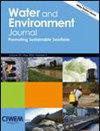计算机视觉技术在水资源管理中的近二十年:文献计量分析
IF 1.8
4区 环境科学与生态学
Q4 ENVIRONMENTAL SCIENCES
引用次数: 4
摘要
鉴于水在日常生活和经济增长中的重要性,有效管理水资源是一项重要任务。水资源管理是一个特定的研究领域,旨在有效管理水资源,以满足社会需求并预防与水有关的灾害。这一领域的许多活动都受益于最近的技术进步。在许多其他领域中,基于计算机视觉的解决方案已成为解决水资源管理领域复杂现实问题的颠覆性技术(例如,洪水检测和测绘、卫星水体监测、水工结构监测和检查、堵塞检测和评估、排水检查和下水道监测)。然而,在水资源管理领域中,仍然有许多方面可以使用计算机视觉技术进行探索。因此,研究与这些技术相关的当前研究趋势,为该领域的新研究人员提供信息是很重要的。在这种背景下,本文对过去二十年中使用计算机视觉技术解决水资源管理领域问题的文献进行了文献计量分析。该分析分为两类:(a)绩效分析,展示出版物数量、引用次数、顶级贡献国、顶级出版期刊、顶级贡献机构和顶级出版商的突出趋势;(b)科学制图,展示基于关键词共同出现的书目记录之间的关系,合著分析、共引分析和书目耦合分析。书目记录(即1059)使用关键字的综合查询从科学网(WoS)核心收藏数据库导出。VOSviewer开源工具用于生成目录记录科学制图的网络和叠加地图。研究结果突出了在水资源管理中使用计算机视觉技术的重要趋势和有价值的见解。分析报告称,出版物数量和对基于深度学习/人工智能(AI)的方法的关注呈增加趋势。此外,洪水测绘、裂缝/裂缝检测、海岸洪水检测、堵塞检测和排水检查被强调为活跃的研究领域。本文章由计算机程序翻译,如有差异,请以英文原文为准。
The last two decades of computer vision technologies in water resource management: A bibliometric analysis
Efficient management of water resources is an important task given the significance of water in daily lives and economic growth. Water resource management is a specific field of study which deals with the efficient management of water resources towards fulfilling the needs of society and preventing from water‐related disasters. Many activities within this domain are getting benefitted with the recent technological advancements. Within many others, computer vision‐based solutions have emerged as disruptive technologies to address complex real‐world problems within the water resource management domain (e.g., flood detection and mapping, satellite‐based water bodies monitoring, monitoring and inspection of hydraulic structures, blockage detection and assessment, drainage inspection and sewer monitoring). However, there are still many aspects within the water resource management domain which can be explored using computer vision technologies. Therefore, it is important to investigate the trends in current research related to these technologies to inform the new researchers in this domain. In this context, this paper presents the bibliometric analysis of the literature from the last two decades where computer vision technologies have been used for addressing problems within the water resource management domain. The analysis is presented in two categories: (a) performance analysis demonstrating highlighted trends in the number of publications, number of citations, top contributing countries, top publishing journals, top contributing institutions and top publishers and (b) science mapping to demonstrate the relation between the bibliographic records based on the co‐occurrence of keywords, co‐authorship analysis, co‐citation analysis and bibliographic coupling analysis. Bibliographic records (i.e., 1059) are exported from the Web of Science (WoS) core collection database using a comprehensive query of keywords. VOSviewer opensource tool is used to generate the network and overlay maps for the science mapping of bibliographic records. Results highlighted important trends and valuable insights related to the use of computer vision technologies in water resource management. An increasing trend in the number of publications and focus on deep learning/artificial intelligence (AI)‐based approaches has been reported from the analysis. Further, flood mapping, crack/fracture detection, coastal flood detection, blockage detection and drainage inspections are highlighted as active areas of research.
求助全文
通过发布文献求助,成功后即可免费获取论文全文。
去求助
来源期刊

Water and Environment Journal
环境科学-湖沼学
CiteScore
4.80
自引率
0.00%
发文量
67
审稿时长
18-36 weeks
期刊介绍:
Water and Environment Journal is an internationally recognised peer reviewed Journal for the dissemination of innovations and solutions focussed on enhancing water management best practice. Water and Environment Journal is available to over 12,000 institutions with a further 7,000 copies physically distributed to the Chartered Institution of Water and Environmental Management (CIWEM) membership, comprised of environment sector professionals based across the value chain (utilities, consultancy, technology suppliers, regulators, government and NGOs). As such, the journal provides a conduit between academics and practitioners. We therefore particularly encourage contributions focussed at the interface between academia and industry, which deliver industrially impactful applied research underpinned by scientific evidence. We are keen to attract papers on a broad range of subjects including:
-Water and wastewater treatment for agricultural, municipal and industrial applications
-Sludge treatment including processing, storage and management
-Water recycling
-Urban and stormwater management
-Integrated water management strategies
-Water infrastructure and distribution
-Climate change mitigation including management of impacts on agriculture, urban areas and infrastructure
 求助内容:
求助内容: 应助结果提醒方式:
应助结果提醒方式:


